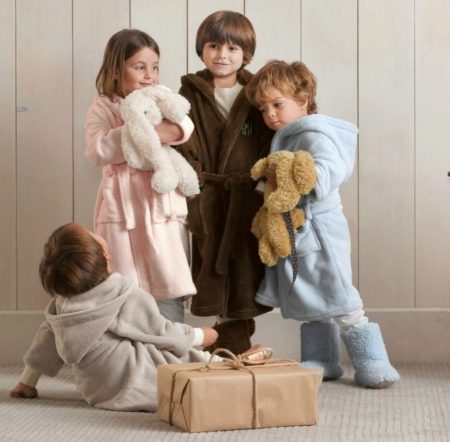Children's bathrobe
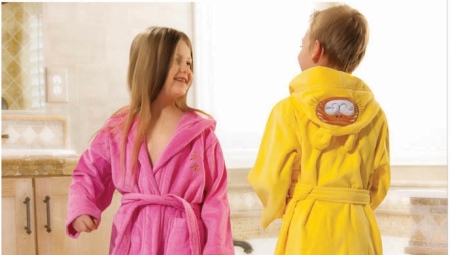
The main thing in children's clothing is comfort. According to this rule, children's bathrobes are made. They must absorb moisture well and retain heat.
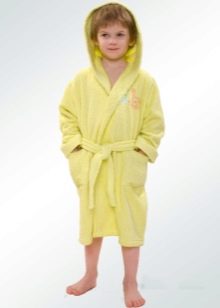
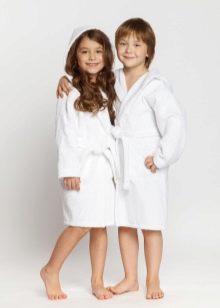
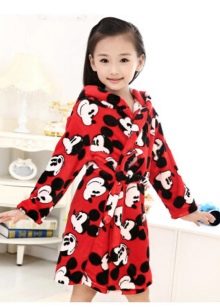
Peculiarities
Children's bathrobes are made of soft terry. Other materials can also be used, but this one is especially loved by parents and children. A prerequisite for a baby product on a naked body is hypoallergenic and natural fabrics, hence the high breathability.
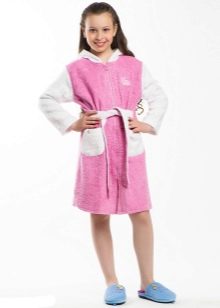


In the correct dressing gown, the child should feel as comfortable as if he were not wearing any clothes. It should be warm and soft to protect the baby's hot skin from cooling.
Materials (edit)
- Mahra. The most popular material for baby bathrobes. This is a cotton fleece fabric. The degree of softness depends on the length and thickness of the pile. This fabric is excellent at absorbing moisture, so the child feels comfortable even without using towels. But if the pile is thick and long enough, the robe can get heavy.
- Microfiber. Synthetic polyester fabric. Less natural and environmentally friendly. But unlike terry, it does not fade, dries quickly and is durable. Drying it with an iron or on a battery is not recommended, otherwise its thermal insulation properties deteriorate.
- Wool. It can be an addition to the material or in a separate version. These robes are warm and natural. Thanks to special processing technologies, it does not prick, but it becomes heavier from moisture. It is necessary to remember about the allergic nature of this material.
- Silk. The fabric is beautiful, lightweight and effective. Mostly suitable for older children, teenage girls. there are no bath options with such a fabric, but in the hot season such a dressing gown is great for cooling the body.
- Nylon. Fabric variation for an inexpensive robe.If your child does not like to wear a bathrobe, then this fabric is well suited, since it will be used only on the way from the bathhouse and back.
- Flannel. Soft double-sided short-pile fabric. It keeps heat well, but after the bath procedures, at least squeeze it out. This also includes waffle linen, but it differs in some roughness of the fabric.
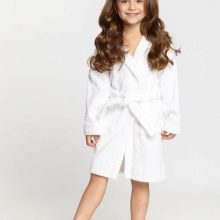
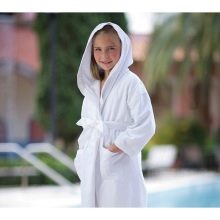
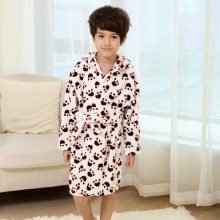
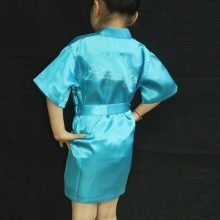
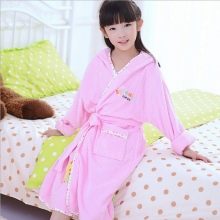
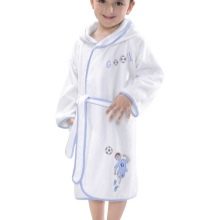
When choosing a material, one must not forget for what purpose you are buying a bathrobe, in which room the child will wear it, and for how long - for a long time, or simply as a change of clothes between water procedures and changing clothes.
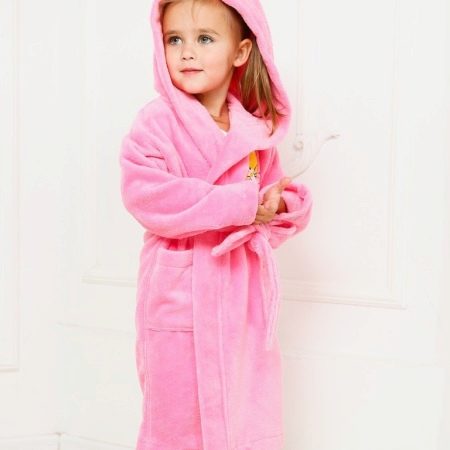
Models
For the little ones
For small children, there is now a large selection of robes. All robes for this age have a hood in order to protect the head from hypothermia. But putting on a robe on a wet little body of a child is inconvenient. Therefore, a good alternative has been invented - a large terry bath towel with a corner instead of a hood. The child simply wraps himself in it and rests in comfort.

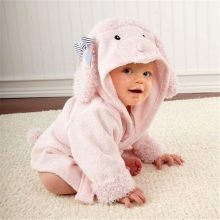
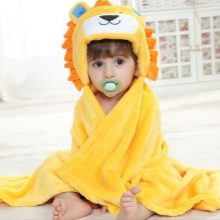
With a zipper
A simple option for kids. Such a robe is easy to fasten yourself. When choosing, look for models with a hidden lock, because cold metal, in contact with the child's skin, can cause discomfort and even skin irritation.
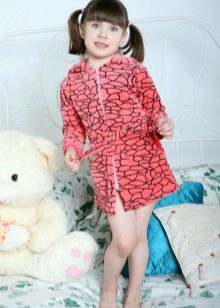
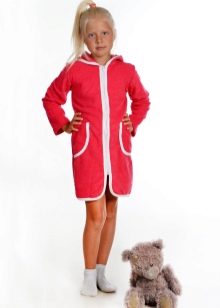
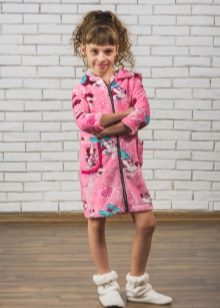
On buttons and buttons
Such robes can be either with sewn-in loops or loops from the edge. Here you have to tinker with the buttoning. And between the buttons there are gaps that let the cold through. In addition, the robe can unfasten itself, which will interfere with active children.
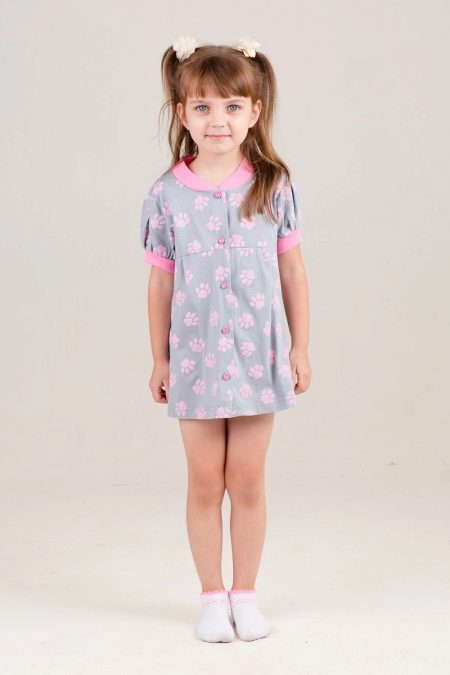
With smell
Double-breasted robe with a belt. Kids love it for the added warmth and ease of putting on. Throwing it over a wet body, all that remains is to tie a belt. Also, smell is a good protection against blowing out.
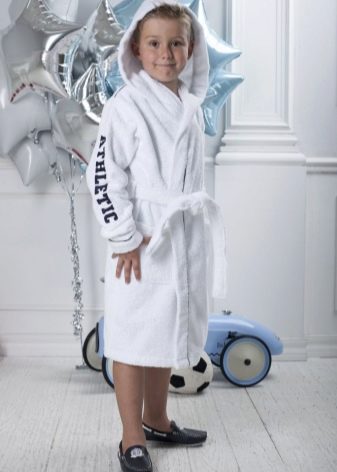

Decorated
Models of children's dressing gowns are made cheerful and bright, because the child always remains with it. Often children's dressing gowns have funny ears and muzzles on the hoods, ponytails. Pockets are decorated with fluffy fur, in the form of paws.

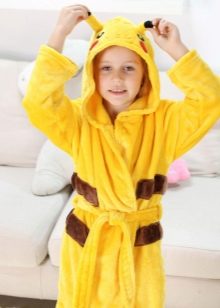
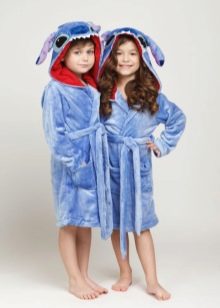
For older children, decor in the form of a personalized embroidery is suitable.
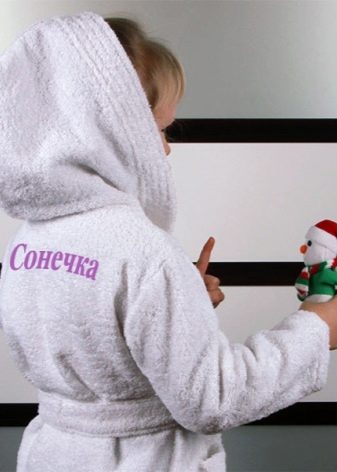

Another decor option is applique. It can be either a simple flower or a letter of the name, or fabulous or cartoon characters.
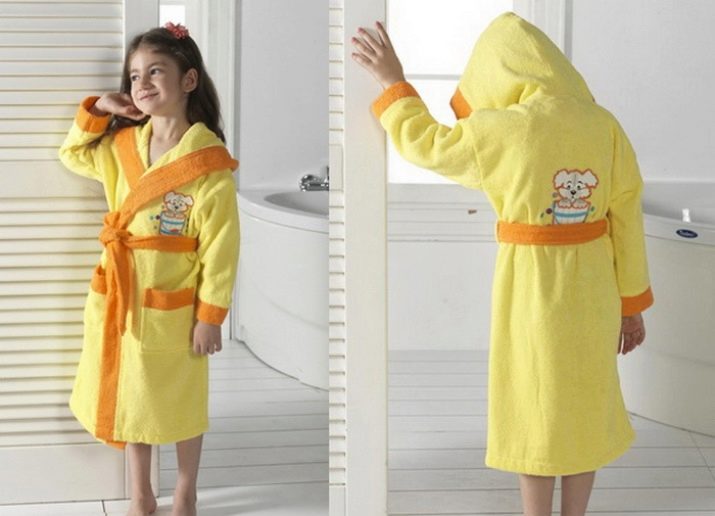
How to choose?
- For a bathrobe, the main property is hygroscopicity. Therefore, you can ask the seller to conduct a water test. High-quality fabric will absorb drops, but synthetic fabric will repel. If the seller refuses such a check, then look at the composition, the more natural ingredients there are, the faster the robe will absorb moisture. At the same time, do not forget that a robe made of dense fabrics tends to become heavier from water.
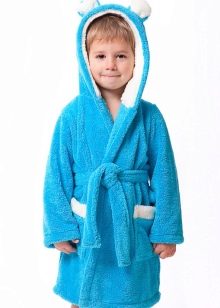
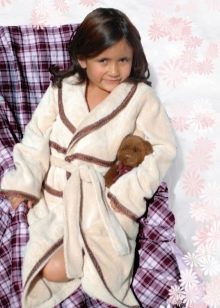
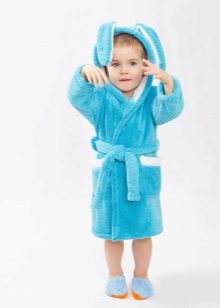
- Look at the quality of the seams - no protruding threads, knots or stripes on top of each other. The structure of the fabric itself should be light. If you choose a terry cloth, then look at the pile - light options, when the pile consists of single twisted threads, such fibers do not stretch, and retain their appearance for a long time. If the pile consists of double loops, then the robe looks more voluminous and softer, but these loops can eventually stretch out and stick out ugly, if you cut them off, you can get holes.
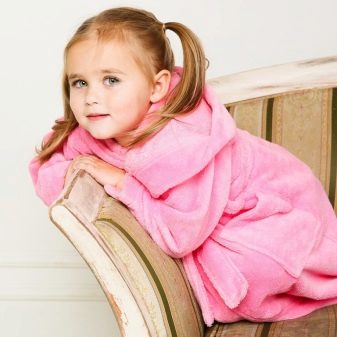
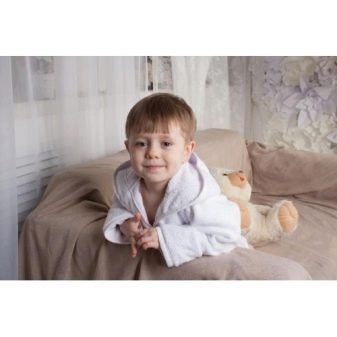
- Avoid bright colors, which means there are a lot of dyes in the fabric. Check the smell of the dressing gown, it should not have foreign metallic and plastic aromas.
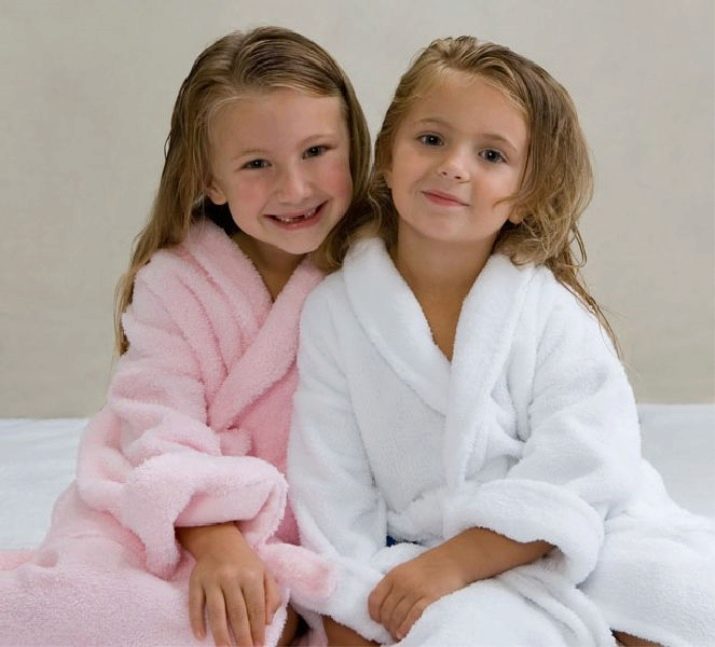
It is best to choose a bathrobe with your child. He himself will choose, the option that he likes, you just have to inspect the seams and composition.

How to sew?
The child can be pleased with a robe and homemade. To do this, mothers take a large bath towel bent in half, and put the child's bent blouse on it, edge to edge. Cut a towel along the contour of the sweater, retreat a few centimeters for the seam and for a loose cut of the robe. It remains to go through the seams on a sewing machine and decorate the robe. You can also add a hood, focusing on the size of the child's head.
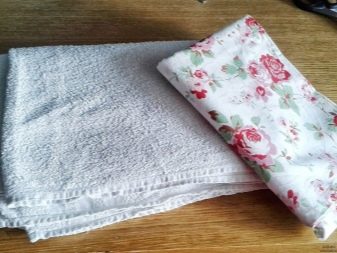
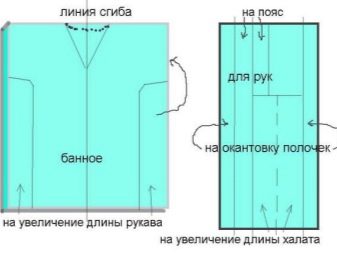
Taking into account all the nuances when choosing, then the robe will become a favorite element of your child's wardrobe. The main thing for a baby gown is comfort and naturalness.
